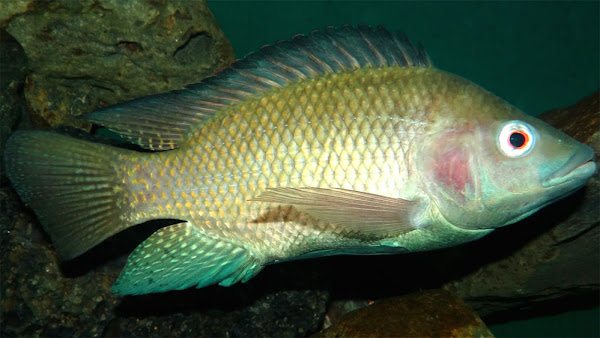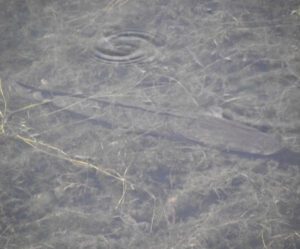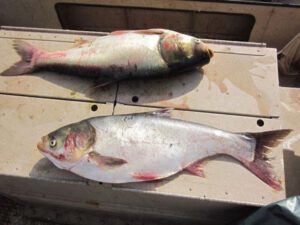The Nile Tilapia fish is a species of Tilapia fish. It is known by some other names, and commercially known as Boulti, Nilotica and Mango fish.
It is a cichild fish and is naive to Israel, Africa from Egypt south to east and Central Africa, and as far as Gambia. It has also introduced outside it’s native range, and today it is available throughout the world.
The Nile Tilapia fish is a very old fish species. Culture of this fish can be traced to ancient Egyptian times as depicted on bas-relief from an Egyptian tomb dating back over 4000 years.
This fish has widely introduced for aquaculture, with numerous existing strains. Read some more information about this fish species below.
Nile Tilapia Fish Characteristics
The Nile Tilapia fish has a compressed body. It has distinctive, regular, vertical stripes extending as far down the body as the bottom edge of the caudal fin, with variable coloration.
Adult fish can reach up to 60 cm body length and up to 4.3 kg body weight. But in commercial production, they are generally grown 400-500 grams.[1]

Behavior
Nile Tilapia Fish are known to be very social animals and regularly form schools. They are active swimmers and can be found near the water surface during the day but tend to move deeper during the night.
They can tolerate a wide range of water temperatures, salinity, and oxygen levels, making them highly adaptable to different environments.
Habitat
Nile Tilapia Fish are native to the Nile River Basin in Africa but have been introduced to many other parts of the world due to their popularity as a food fish.
They can thrive in both freshwater and brackish water and are known to inhabit rivers, streams, lakes, ponds, and even man-made reservoirs. They prefer warm waters that are between 25-30°C but can tolerate temperatures as low as 10°C.
Economic Importance
Nile Tilapia Fish are one of the most important species of fish in aquaculture due to their fast growth rates, ability to adapt to different environments, and high nutritional value.
They are also very cost-effective to produce as they can be fed with a variety of inexpensive feed sources. The demand for Nile Tilapia Fish has increased significantly in recent years due to the growing popularity of fish as a healthy protein source.
Feeding
The Nile Tilapia fish are omnivore, and they feed on both plankton and aquatic plants. They generally eat during the daytime hours, and they exhibit a behavioral response to light as a main factor contributing to feeding activity.
Both males and females generally eat almost same amount of foods, but the males are tend to grow faster. The males tend o grow larger due to a high efficiency of converting food to energy.
Breeding
The Nile Tilapia fish reproduces through mass spawning of a brood within a nest made by the males. In such an arrangement, territoriality amongst the males lead to large variations in reproductive success for individuals among a group.
Depending on temperature, these fish reach maturity at their 3 to 6 months of age. Breeding occurs only when temperatures are over 20 °C.
The females generally incubate eggs approximately for a week inside their mouths. Inside the mouth of the female fish, the larvae batch and stay until the vitellus is reabsorved. The females can carry up to 200 eggs inside their mouth.
Uses
The Nile Tilapia fish is used and cultivated mainly for food.
Special Notes
The Nile Tilapia fish is a very fast-growing fish species. It is economically a very important fish species and cultivated in many countries throughout the world.
These fish can generally live for up to 9 years. They can tolerate brakish water and survives temperatures between 8 and 42 °C. It is a very tasty fish and has a great demand in the market.
Today it is raised mainly for food. But in recent research done in Kenya, this fish has been shown to feed on mosquito larvae, making it a possible tool in the fight against malaria in Africa. However, review full breed profile of the Nile Tilapia fish in the chart below.
| Name | Nile Tilapia |
| Kingdom | Animalia |
| Phylum | Chordata |
| Class | Actinopterygii |
| Order | Perciformes |
| Family | Cichildae |
| Genus | Oreochromis |
| Species | O. niloticus |
| Binomial Name | Oreochromis niloticus |
| Other Names | Boulti, nilotica, mango fish |
| Breed Purpose | Mainly food |
| Special Notes | A very fast-growing fish species, commercially very important fish species, cultivated in many countries throughout the world, up to 9 years lifespan, can tolerate brakish water, survive temperatures between 8 and 42 °C, very tasty, has a great demand in the market, used mainly for food |
| Breeding Method | Natural and artificial |
| Weight | Usually grow 400-500 grams in commercial farms, but can grow up to 4.3 kg |
| Water Type | Brakish water |
| Climate Tolerance | Almost all climates |
| Body Color | Body color can vary |
| Rarity | Common |
| Availability | Worldwide |







Thanksgiving for your better fish skills you provide, I real appreciate it and I requisite you to continue be you’re student.
Halder all fish seed suppliry and farming information
Rohu And kathla, Grees cap, Rupchunda
Bilakcap, chitol, Desi catfish,
Contact 8250334185
WhatsApp 8101093675